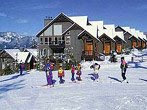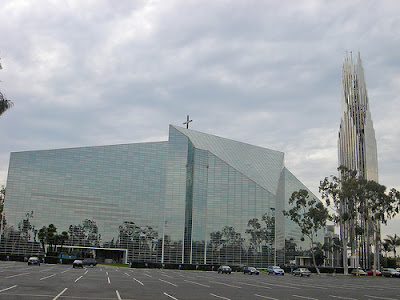Scandinavian Countries
Scandinavia ia located on the Scandinavian Peninsula in the northern part of Europe. The countries which make up Scandinavia include Denmark, Norway and Sweden. The "borderline" Nordic countries are Finland, Iceland and the Faroe Islands which have close historic and cultural relations to Denmark, Norway and Sweden and thus some considered as part of Scandinavia.
Driving in Scandinavia
The first time I got tangled with a Scandinavian country is I think Sweden found that by getting all cars to have their headlights on even during daytime, the number of accidents were reduced. My country followed partly by requiring motorcyclist, which bear the highest risk of fatal accidents, to also keep headlights on at all time, including daylight. Now I found out that this rule of keeping headlights on 24 hours don't only apply to Sweden, but throughout Scandinavia. However, headlights must be dipped, meaning no highlights. In my country, only the front driver and passengers are required to belt up. In Scandinavia, passengers in the back seats are also required to use seat belts. Driving in my country follows United Kingdom, on the left. In Scandinavia, vehicles have to drive on the right. I have had a taste of it in Belgium when I had to hire a car to fetch my family from the airport in Brussels. They too drive on the right. It felt pretty strange and one have to try hard not to end up on the wrong side of the road. Plus in crossing the street, one have to be extra attentive as pedestrian crossing a road have to pay extra attention to different direction of the road. Requirements for motorcyclists are the same. All must wear safety helmets, although many in the rural and less accessible areas in my country ignore this rule.
As in many countries, driving under of influence of alcohol, drugs, euphoriants, plus using a hand phone while driving, all are an offence. Difference is, if you are caught in Scandinavia, the penalty is very heavy.
Speed limits on highways differs from country to country. It is 130km/hr in Denmark, 90km/hr to 100km/hr in Norway, 110km/hr in Sweden. Where traffic are heavy, roads near cities or for treacherous roads, lower speed limit will apply. Speed limit On smaller roads throughout Scandinavia is between 70 to 80 km/hr. It is 30 to 50 km/hr within residential areas.
Why drive in Scandinavia
Yes, why bother to drive around Scandinavian countries. Very simple answer. They have excellent roads with easy to understand traffic signs.The scenery is beautiful and makes for a very memorable experience. See example in the photo below:

Nearly all highways in Denmark and Sweden are free. Motorists only pay toll for using the Great Belt Bridge between Sealand and Funen in Denmark, and the Öresund Bridge between Malmö in Sweden and Copenhagen, Denmark.

The Oresund Bridge carries a two-track rail plus a four-lane road across the Oresund strait joining the Danish capital of Copenhagen with the Swedish city of Malmö. How much you pay to use the Oresund Bridge depends on the type of vehicle.
Toll collected from tolled highways in Norway, however, is used for maintaining the quality of the roads and tunnels. As of 2007, there are 45 road tolls in Norway.
Sweden
The Kingdom of Sweden is a Nordic country on the Scandinavian Peninsula in Northern Europe bordering Norway in the west and Finland in the northeast. Sweden is a member of the European Union. If I were to visit Sweden, I would not repeat the mistake of the past and only start hunting for accommodation upon arrival. I would book accommodation ahead of arrival from websites like
Sweden Hotels.
Stockholm is the capital of Sweden, the seat of the national Swedish government and the Swedish Parliament. The official residence of the Swedish monarch is also in Stockholm. Here is an interesting part of Stockholm: Skeppsbron. Skeppsbron is as street and a quay in Gamla Stan, the oldest part of Stockholm. Skeppsbron starts from the bridge Strömbron in front of the Royal Palace and stretch southward to Slussen.
Online booking of accommodation is available from
Stockholm Hotels.
Norway
The Kingdom of Norway, a constitutional monarchy in the western portion of the Scandinavian Peninsula of Northern Europe is neighbor of Sweden, Finland, and Russia. It is a long and narrow country. Norway has a long coastline along the North Atlantic Ocean its famous fjords.

Photo of Sunrise Oslo Fjord is property of
Jim GOnline booking of accommodation in Norway is available from
Norway HotelsOslo is the capital city of Norway and the third-largest Scandinavian city after Stockholm and Helsinki. The City Hall of Oslo is where the annual Nobel Peace Prize ceremony is held, and is a world event. The Holmenkollen ski jump is the venue for the Holmenkollen ski festival and was where the 1952 Winter Olympics was held. At Bygdøy, a peninsula on the western side of Oslo, is the Fram Museum where the ship Fram is housed. Fram was probably the strongest wooden ship ever built and was used in expeditions in the Arctic and Antarctic regions by the Norwegian explorers Fridtjof Nansen, Otto Sverdrup, Oscar Wisting, and Roald Amundsen between 1893 and 1912. Fram It was designed by the Norwegian shipwright Colin Archer for Fridtjof Nansen's 1893 Arctic expedition. At Bygdøy you can also find the Viking Ship Museum with ships from Gokstad, Oseberg and Tune.
Among the other attractions of Oslo are Akershus Castle and Fortress, Norsk Folkemuseum, the Norwegian Museum of Cultural History at Bygdøy, The Armed Forces Museum, The Historical Museum, The Museum of Modern Art, The Holmenkollen Ski Museum, Holmenkollen, The Kon-Tiki Museum, Bygdøy, The Munch Museum, Tøyen, The river Akerselva, The National Gallery, The Norwegian Maritime Museum, The Oslo City Museum, The Royal Palace, The Henie-Onstad Art Centre, Oslo Cathedral, Norwegian Museum of Science and Technology, The Storting, parliament building, The Vigeland Park in the Frogner park (Frognerparken), Tryvannstårnet, Hovedøya and Ullevål Hageby.
Online booking of accommodation is available at
Oslo Hotels.
 Among various kinds of Whistler lodging are condos, slope side luxury homes, town homes and ski chalets. Many of them are ski-in, ski-out accommodations located right at the edge of the snow covered slopes from which you can just step right out of the door and be a few steps from your skiing pleasures. An example is the Benchlands Marquise which also offers common hot tub and pool. However, description of this accommodation says it has "ski-in/ski-out access just across the street, so it is not exactly ski slope right at the door steps. However, search hard enough or make some enquiries, I am sure you will find something.
Among various kinds of Whistler lodging are condos, slope side luxury homes, town homes and ski chalets. Many of them are ski-in, ski-out accommodations located right at the edge of the snow covered slopes from which you can just step right out of the door and be a few steps from your skiing pleasures. An example is the Benchlands Marquise which also offers common hot tub and pool. However, description of this accommodation says it has "ski-in/ski-out access just across the street, so it is not exactly ski slope right at the door steps. However, search hard enough or make some enquiries, I am sure you will find something.







